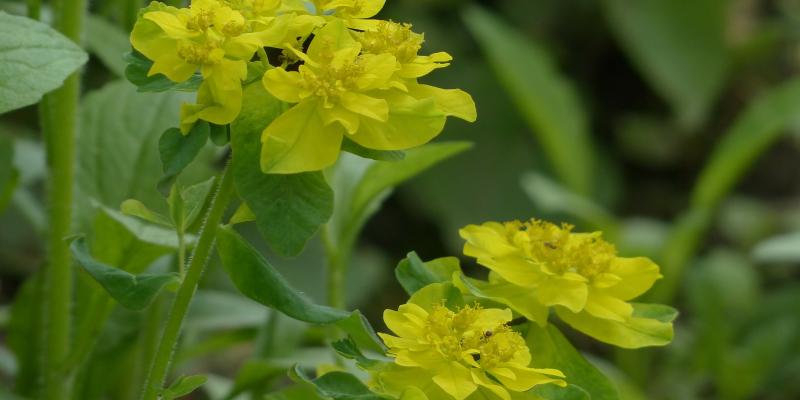When we go out and enjoy nature, the threat that some wild-growing plants could pose to us doesn’t cross our minds. And yet coming into contact with some of them might cause burns and hard-to-heal wounds, while others contain deadly poison.
To avoid being poisoned by a dangerous plant, we should avoid picking those that we don’t know, and remember not to rub our faces, eyes or mouths with our hands after contact, but rather wash our hands as soon as we can.
If we encounter alarming symptoms – a burning sensation in the mouth, salivation, nausea, vomiting or dizziness – we should immediately seek medical help.
The burn-causing Sosnowsky’s Hogweed
One of the most dangerous plants found in nature is Sosnowsky’s Hogweed, which originates from Caucasus. After World War 2 it began to be cultivated in the Soviet Union as a silage plant; not long after it was brought to Poland and other Eastern Bloc countries. The crops were soon abandoned, but Heracleum sosnowskyi began spreading.
It is a large plant that usually grows up to 1.5 m, although sometimes it can soar as much as four metres in the air. Coming into contact with this plant causes severe skin burns, which can appear even after two days. The blisters are similar to those caused by boiling water, but the marks can stay for as long as several years. If you have any burns, it’s best to see a doctor.
The irritating cypress spurge
Many plants contain plant sap, which can be released during cutting or picking. The sap – white, yellow, or orange – causes skin, eye, and mucous membrane irritation.
It is contained in plants from the spurge family, such as the cypress spurge which grows up to 40 cm on dry meadows and roadsides and can be recognised by its characteristic needle-like leaves.
Plant sap is also secreted by the commonly-found tetterwort (a.k.a. greater celandine) from the poppy family. The yellow sap of this plant is sometimes used in herbal treatments to remove warts.
The stinging nettles
The commonly-growing plants of the genus Urtica – the stinging nettle, which grows up to 150 cm and the much shorter dwarf nettle - also cause skin irritation. These plants are covered with stinging hairs, which contain sap rich in such substances as acetic and formic acid. The hairs are saturated with silica which results in their tip breaking off. The remaining part assumes a needle-like shape, which cuts through skin easily.
The signs of nettle stinging include itching, a burning sensation, and blisters on the skin similar to mosquito bites. These usually disappear after a few minutes.
Wild-growing plants from the crowfoot family, which, besides crowfoot, include pasqueflowers and anemones, and are also grown as ornamental plants, also contain sap that irritates the skin and mucous membrane.
The toxic northern water hemlock
The Polish flora also features many plants which are toxic on ingestion. One of the most dangerous of these is northern water hemlock, or Cicuta virosa, which grows in wet areas. The Polish word for this plant – szalej is derived from szaleć – to go mad, and a person acting like crazy is idiomatically described as someone who has just consumed northern water hemlock.
However, northern water hemlock is perhaps best known under the Latin genus name Cicuta – as it most likely was the base for the poisonous liquid that Socrates was sentenced to drink as a form of capital punishment.
Northern water hemlock belongs to the parsley family, which also includes other toxic plants, such as fool’s parsley and poison hemlock, which has been used as a poison base since ancient times.









Comments (1)